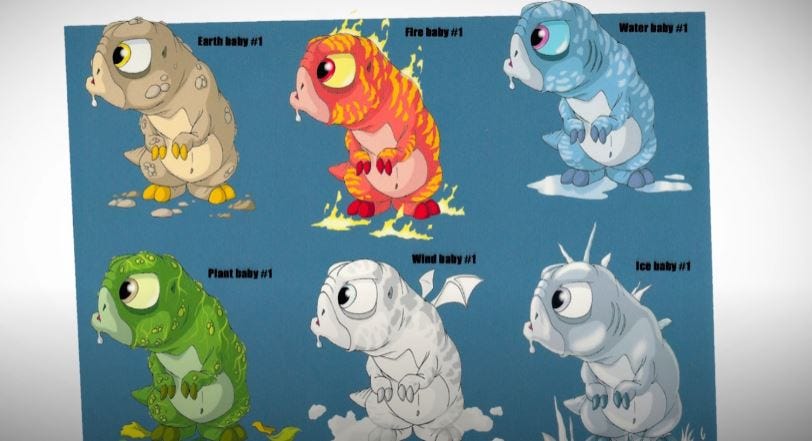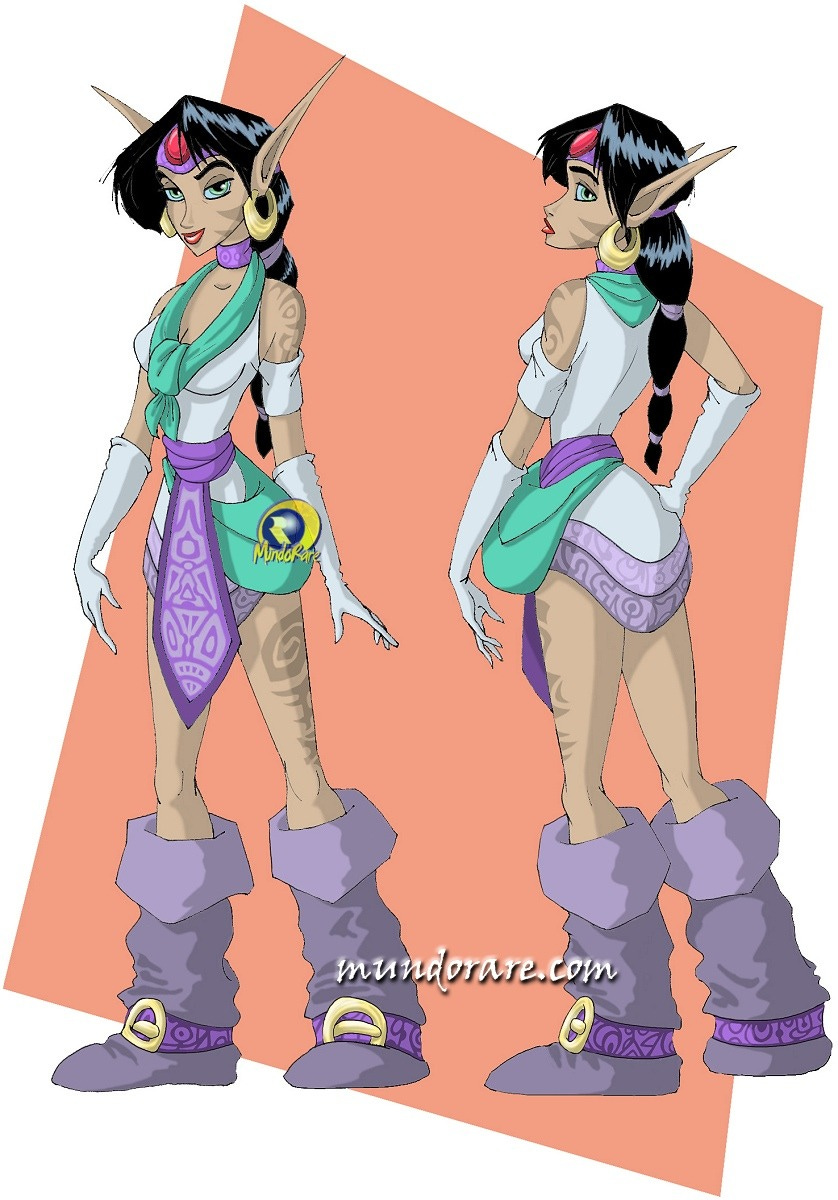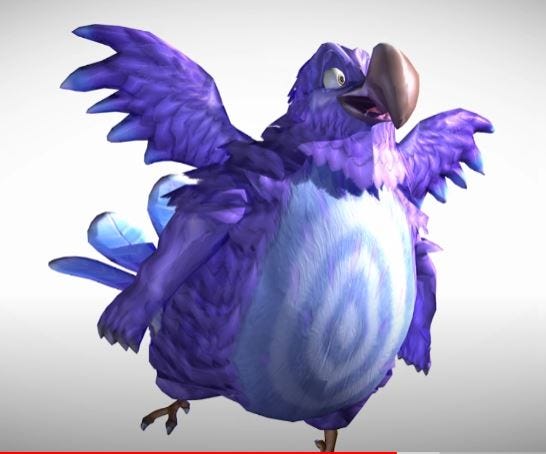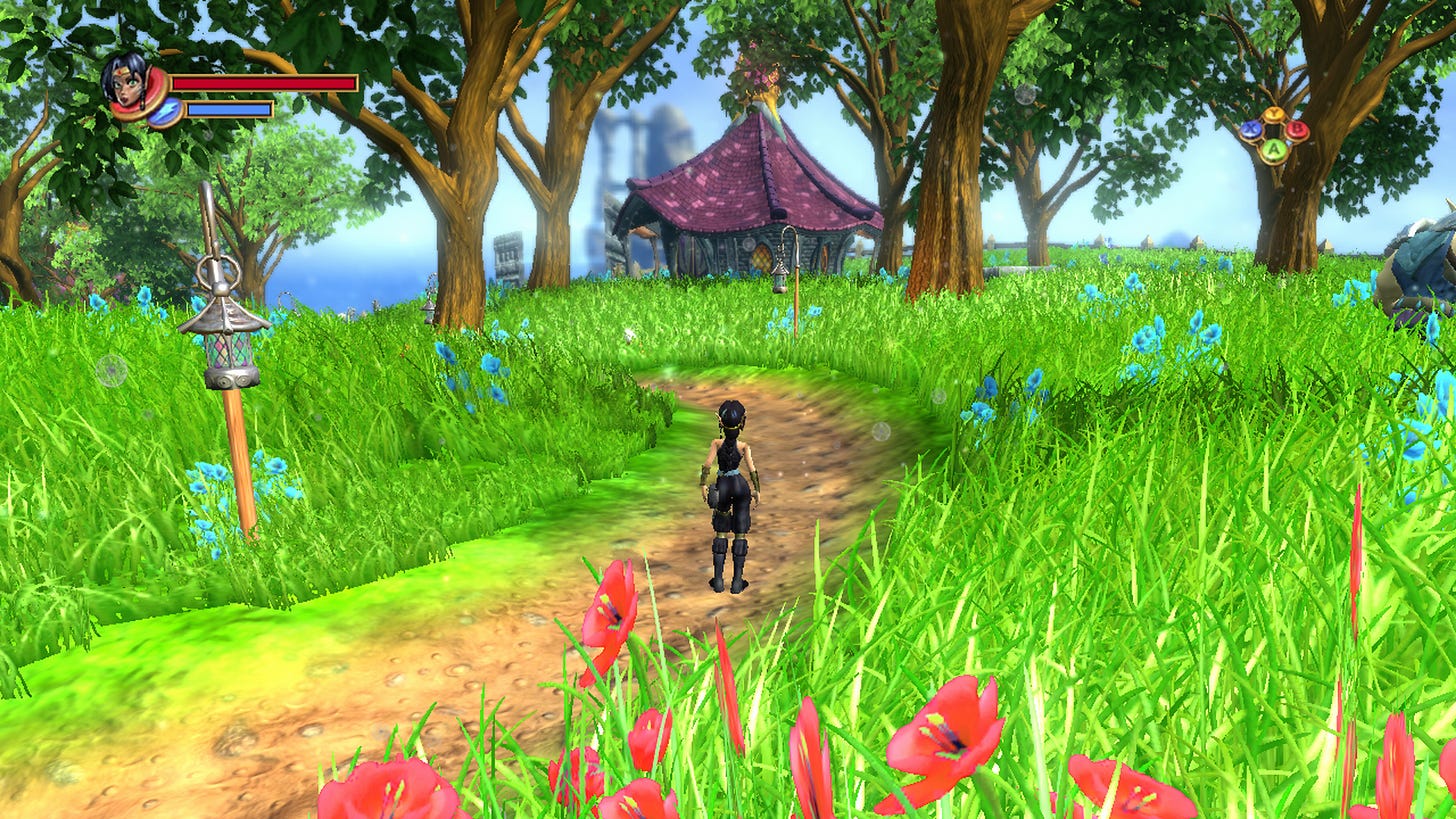Kameo: Elements of Power Retrospective and Review (Part 1)
The whimsical high-fantasy world of Kameo with its vibrant colours and heroic atmosphere played right into my childhood fantasies when I was younger. But little did I know of what other people thought of the game, nor did I know of its troubled development. So revisiting the game with its various wonders and jank in my adulthood with fresh eyes and a critical mind was certainly a great and interesting experience. Nevertheless, I must warn for spoilers in all parts of this retrospective/review. With all that said, let’s explore the majesties that Kameo has to offer.
Spanning 3 generations of consoles, Kameo by Rare Ltd was a massive production challenge. It was originally drawn up during the Nintendo 64 era, but was being developed for release on GameCube. However, following the purchase at the hands of Microsoft in 2002, the game’s future became uncertain due to the change in audience and technology, as Xbox typically has an audience that is more appealed by darker tones rather than the cutesy style which appeals to Nintendo Fans. No offence to any Nintendo fans reading. Kameo was rebuilt for Xbox, but numerous revamps and rebuilds as well as the upcoming Xbox 360 meant that Kameo was put on hold in 2004.
Ultimately, Kameo became slated to be a launch title for the Xbox 360 alongside another Rare game called Perfect Dark Zero. Kameo was 80% complete for the original Xbox ,but fortunately, rebuilding the game for the Xbox 360 was not as time-consuming as it sounds and it mainly acted as a key to unlock the technical constraints upon the game. Now, Kameo needed to demonstrate the potential of the Xbox 360 as a key representative of first-party games during the 360’s launch; and from my opinion, they certainly did deliver. But before we dive into the world design and audio, let’s take a look at the development of the game.
Originally, when being designed for the GameCube, Kameo’s gameplay entailed capturing and growing baby creatures for you to grow and transform into, taking some obvious inspirations from Pokémon. You could grow these creatures by feeding them and taking care of them, but this was an aspect of gameplay that was changed as tester feedback relayed that the gameplay wasn’t fun and was simply put, monotonous, as anyone who has played EA’s Spore would also be able to recognise. Both Kameo and her aptly named sister, Kalus, were supposed to have dragon companions called Meepo and Kreepo respectively who would assist in this process of collecting baby creatures, but they were scrapped. Not wanting to waste the production time they spent on the dragons, it’s believed that Rare recycled Meepo into the Elemental warrior, Ash, and Kreepo into the evil Dragons of the Troll army.
The design of Kameo as well as her name was also a later change. Originally she was called Ariel and the game was called Ariel’s Quest. However, I imagine this name was changed due to obvious legal complications with Disney and their little fantasy Princess under the sea. Before the move to Xbox, Kameo’s outfit initially had a white and purple colouration, reflecting her regal stature as a princess. However, as the audience and Kameo’s origin story changed, her outfit was redesigned to become more tribal and distinct from the design of her home.
In the Xbox version, Kameo was also planned to have a brother called Cailem, whom was abducted by Trolls at a young age and taught that he was a deformed Troll, leaving him as a potential tragic villain. This idea was scrapped though, but many theorise that some elements of him were recycled for use in Farron, the mysterious knight in the final game, due to similarities in their designs.
Concerning the development of the elemental creatures themselves; there were many originally planned during the Gamecube days but the number was cut to 12 as the developers wanted a greater focus on unique world interactivity; 2 more creatures than what’s in the final game. These two extra warriors were air elementals, but were scrapped as their abilities allowed testers to bypass levels. Personally, I don’t think it was necessary for them to be cut entirely, perhaps their abilities could be redesigned for interaction with the world without breaking the game. For example, they could have been given the ability to waft flames in the direction they are facing, or hover/glide in the world. If the cut was made because of time or fiscal constraints, then the choice is understandable. Now, what was left of the creatures Kameo could morph into became the Elemental Warriors we now know in the final game. You can find some more interesting insights into the full (speculated) development of the warriors and characters we got in the final product in the ‘Kameo-through-the-year’s tumblr page
Now that we’ve touched on the early development, let’s take a look at the later stages. With the Xbox 360, many technical limitations were lifted. The vast battlefield known as the Badlands was massively expanded upon to become a large world-space filled with Troll and Elfin soldiers meeting it out, blade-to-blade, whilst also holding many secrets to discover. Modifying the engine and code of the game to allow the area to have as many NPCs as it did in the final game was a huge undertaking for the team, and from my opinion, it certainly pays off. I have yet to see another 3rd person adventure game with such large armies across a world-space, with perhaps the exception of the Shadow of Mordor/War games by Warner Bros. Furthermore, the 360s hardware allowed for many more particle effects, greater resolution and colour saturation, liquid physics , and much MUCH more grass. Instead of going through the monotony of placing each individual blade of grass in the appropriate areas, Rare designed an algorithm to “grow” the grass. Areas were “seeded” with grass and the algorithm would cause them to grow into full blades of grass when the area was loaded. Concerning the particle effects, the Rare Replay of Kameo made note of the Throne Room which was notorious for the density of the particle effects. They stated that they tried to put in 1,000,000 dust particles in the room, and whilst it worked, you couldn’t see anything. Instead, they put in 100,000 particles. If Microsoft wanted Rare to show the graphical potential of the Xbox 360, Rare certainly did a phenomenal job. The saturation of colour, the bloom effects, and the sheer density of the grass alongside Kameo’s cartoonish artstyle makes the game almost timeless in its visual appeal. Whilst you can certainly tell that it’s an old game, its visuals don’t look as dated as some other launch titles on the 360 such as Quake 4 or Gun, which makes it a lot easier for players to return to the world of Kameo as well as introducing new players who missed the game back at its launch.
We’ve covered visual appeal, but what about audio appeal? How good is the soundtrack for Kameo: Elements of Power? The audio Lead, Steve Burke, originally started making soundtracks in 2001, back when it was still slated for GameCube. Whilst the majority of these are not in the final game, you can still find them here.
If you listened to them, you can probably tell when comparing them to the final audio tracks that the game was originally supposed to have a much lighter and friendlier undertone, and the music set the atmosphere to be more like a wilderness adventure game. Following the Microsoft acquisition though, a change in direction was needed in all areas to satisfy the darker undertones that the Xbox audience was used to, and the audio department was no exception. The music became dramatically more orchestral. It can feel epic and heroic on the battlefield; dreaded and sinister during Troll attacks; and mysterious and charming in the various kingdoms/tribes of the world. Burke did a phenomenal job creating the soundtrack and never failed to deliver on establishing an atmosphere. Additionally, I would be remiss to neglect the performance of Aisling Duddy (from Rare’s art department at the time) in the vocals of some of the soundtracks. She was given some vocals in Manx (the local language of the Isle of Man) and was asked to lend her voice, and it blends perfectly with the setting. One of the more notable soundtracks with her voice in is that of the Enchanted Kingdom as it eases the listener into relaxing and enjoying the tranquillity of the magical land around them. Most appropriately, Burke’s work did not go unrecognised at the time, as the soundtrack in Kameo was nominated for the Academy of Interactive Arts and Sciences Outstanding Achievement in Original Musical Composition Award, but it unfortunately lost to God of War.
Before we move onto the gameplay of Kameo, let’s establish the setting of the world. Kameo is set in a high-fantasy world saturated with typical fantasy tropes and quirky fae like creatures. Magic faeries and elves, evil green people threatening magic with technology, as well as fantastical architecture. All throughout the various tribes and kingdoms of the world, there are very few similarities between them. They are all entirely unique, with the 3 tribes reflecting some of the elemental powers you can obtain; such as plants, water, and ice. There’s also the Enchanted Kingdom, the Elfin Kingdom floating high above the battle-scarred Badlands. The Enchanted Kingdom bears similarities between Rivendell from Lord of the Rings and Dalaran from Warcraft, and has all the harmony and magic that comes with them. A peaceful seclusion from the bitter war being fought below in the Badlands. As I mentioned earlier, the Badlands is filled with vast armies of Elfin and Trolls. Here you can exercise your elemental warrior’s abilities and fulfil your power-fantasy desires against an unlimited number of trolls. Also, as the world-space of the badlands expanded, it became apparent to the designers that you would need a faster means of travel. Thus, the armoured horse was created. With this horse, Kameo could also charge straight into the troll armies and toss them in the air like a load of big green pancakes. Lastly, there’s the almost ubiquitous presence of Thorn’s Castle looming ominously in the background of the Badlands, which is of course blocked off until you have the final warrior.
Throughout all these world-spaces, you can find various hidden items such as elemental fruit to upgrade you warrior’s abilities, alternate skins, elixirs of life to extend your health bar, as well as crystal eyes. These crystal eyes provide both advantages and disadvantages to your means of play. For example, one of the earliest eyes you can find, the Eye of Restoration, allows you to regenerate your health, but slows the regen rate of your spirit bar, the resource used for powering your warrior’s abilities. There were also some plans for minigames in Kameo, but were never implemented due to time constraints. All that remains are the ‘warrior trials’ hidden beneath a hut in the Badlands. This trial entails taking out 40 trolls within 1 minute and 30 seconds; succeed and you are rewarded with an elemental fruit. I doubt that these minigames would have been entirely combat based. Perhaps some might have been more puzzle based requiring you to use combinations of your warriors to solve, or perhaps there might have been a minigame based on the bar and the karoke machine in the Forgotten Forest Glade. But this is all baseless speculation. Nevertheless, the world of Kameo is filled with unique and remarkable demonstrations of creativity that bears the cartoonish mark that Rare does love to leave on their games, never letting one area seeming too similar to another.
This surmises the first part of the Kameo: Elements of Power Retrospective and Review. In the next part of this retrospective, we will cover the gameplay of Kameo, what it did great, and where it needed improving. I hope you enjoyed reading and I hope you read the next parts. Future parts will be linked in the comments upon their release. Once again, thank you.
Sources:
https://www.eurogamer.net/articles/2015-11-20-xbox-360-turns-10-composing-kameo
http://www.raregamer.co.uk/kameo-elements-of-power-tepid-seat/
http://www.raregamer.co.uk/games/kameo-elements-of-power-interview-cinematic-artist-michael-cawood/
http://www.raregamer.co.uk/games/kameo-elements-of-power-interview-lead-tester-chris-chamberlain/
http://www.raregamer.co.uk/games/kameo-elements-of-power-interview-background-artist-phil-dunne/
http://www.raregamer.co.uk/games/kameo-elements-of-power-interview-lead-artist-mark-stevenson/
http://www.raregamer.co.uk/games/kameo-elements-of-power-interview-software-lead-phil-tosell/
http://www.raregamer.co.uk/games/kameo-elements-of-power-interview-writer-chris-allcock/








I also forgot to mention that the upgrade to Xbox 360 also allowed for dynamic NPC routines as well as day-night cycles.